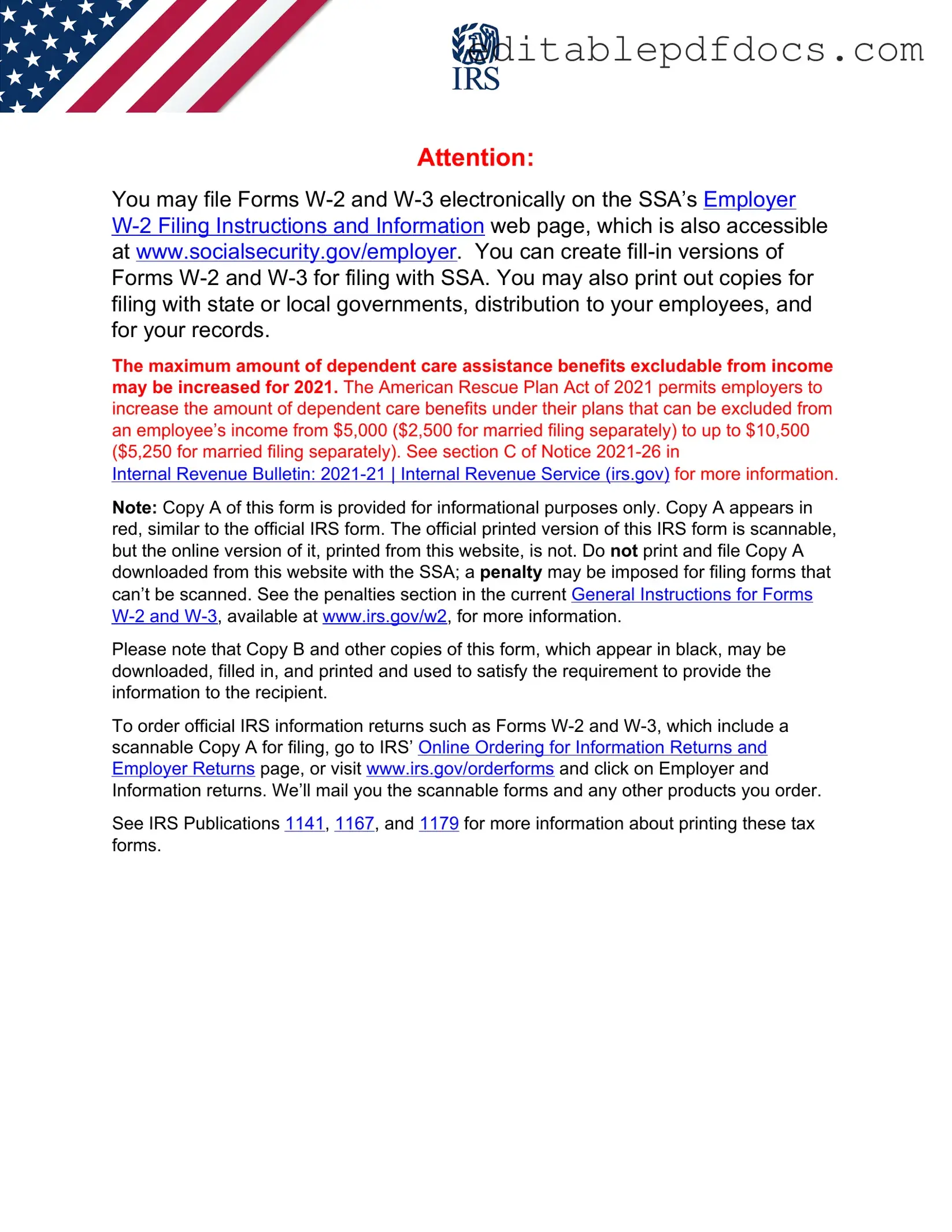Filling out the IRS W-3 form can be straightforward, but many people make common mistakes that can lead to delays or complications. One frequent error is incorrect name matching. The name on the W-3 must exactly match the name associated with the employer’s Employer Identification Number (EIN). If there’s a mismatch, it can cause issues with processing.
Another common mistake involves inaccurate reporting of wages. Ensure that the total wages reported on the W-3 match those on the accompanying W-2 forms. Discrepancies can trigger audits or requests for clarification from the IRS.
People often overlook the importance of entering the correct EIN. This number is crucial for identifying the employer. If it’s wrong, the IRS may not be able to link the W-3 to the right business, leading to potential penalties.
Many filers forget to sign and date the W-3. This form requires a signature from an authorized person, which confirms the accuracy of the information provided. A missing signature can result in the form being rejected.
Providing incomplete information is another mistake. Ensure all required fields are filled out completely. Leaving out essential details can delay processing and create confusion for the IRS.
Some individuals fail to keep copies of the W-3 and related documents. It’s important to retain these records for your files. Having them on hand can be beneficial if questions arise later.
Lastly, many people miss the deadline for submitting the W-3. Be aware of the due dates to avoid late penalties. Timely submission is essential for compliance and can save you from unnecessary headaches.
